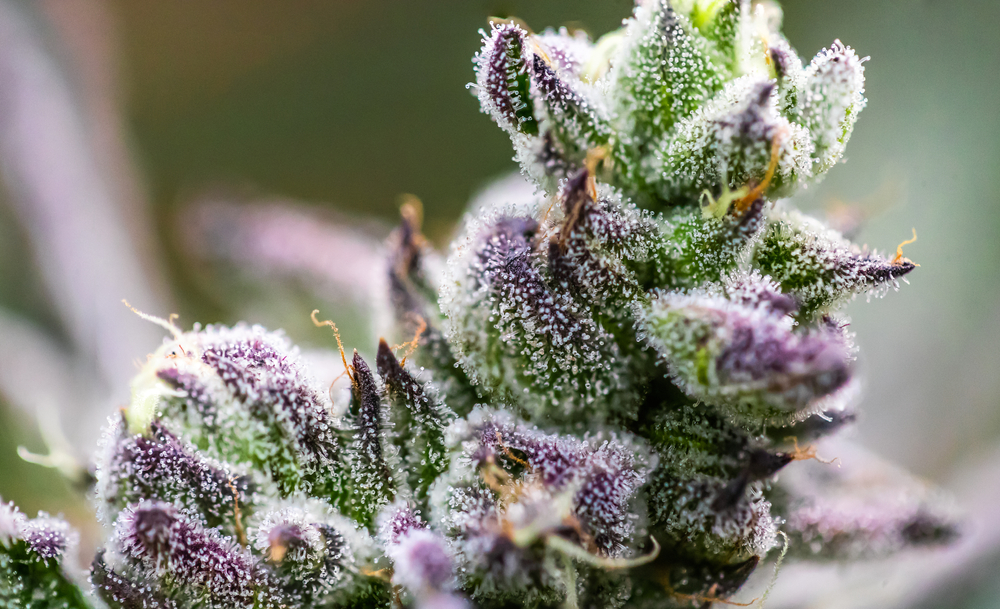From ancient civilizations to modern societies, this enigmatic plant has played a prominent role in cultural, medicinal, and recreational contexts around the world. As the landscape of cannabis legalization continues to evolve, it’s crucial for patients to have access to accurate and trustworthy information about this therapeutic plant. Whether you’re navigating the world of medical cannabis for the first time or seeking to deepen your understanding, our goal is to equip you with the knowledge you need to make informed decisions about your healthcare journey. Join us as we explore cannabis facts like science, benefits, and regulations surrounding medical marijuana in Pennsylvania, empowering patients to access safe, effective, and compassionate care.
Jump to Specific Cannabis Facts
Cannabis Simple Definition
Cannabis Scientific Definition
Cannabis Strains
More About Cannabinoids
More About Terpenes
Most Common Terpenes
Forms of Medical Marijuana
Other Names for Cannabis
Cannabis Facts: Simple Definition
Cannabis, also known as weed, is a plant that contains chemicals called cannabinoids. When the flowers of these plants are harvested and dried, you’re left with the psychoactive “drug” people often refer to as “marijuana.” The most well-known cannabinoid is THC (tetrahydrocannabinol), which is responsible for the plant’s psychoactive effects, meaning it can alter your mood, perception, and consciousness when consumed. However, cannabis also contains other cannabinoids like CBD (cannabidiol), which doesn’t produce a “high” but may have therapeutic effects.
Cannabis Facts: Scientific Definition
Cannabis refers to a group of three plants in the Cannabaceae family with psychoactive properties, known as Cannabis sativa, Cannabis indica, and Cannabis ruderalis. Cannabis plants produce both male and female flowers, with the female flowers being the primary source of the psychoactive cannabinoids. The flowers, also known as buds or colas, contain the highest concentration of cannabinoids and terpenes, making them the most sought-after part of the plant for recreational and medicinal use.
Cannabis flowers contain various chemical compounds called cannabinoids, which interact with the body’s endocannabinoid system when consumed. In addition to THC, cannabis contains numerous other cannabinoids, such as cannabidiol (CBD), cannabinol (CBN), and cannabigerol (CBG), among others. These cannabinoids have varying effects when they interact with your endocannabinoid system. For instance, CBD is non-psychoactive.
Cannabis also contains terpenes, aromatic compounds that contribute to its distinctive smell and may have therapeutic properties of their own. These compounds, along with cannabinoids, work synergistically in what’s known as the entourage effect, where the combined effect of multiple cannabis compounds may be more significant than the effect of each compound individually.
Cannabis Strains
Cannabis strains are varieties of the Cannabis sativa plant bred to emphasize certain characteristics, such as cannabinoid content, aroma, flavor, and overall effects. The term “strain” typically refers to a specific genetic lineage or combination of genetics within the cannabis plant.
Strains can vary wildly in their chemical composition, including the concentrations of cannabinoids and the presence of terpenes or other aromatic compounds. This variation leads to different effects, ranging from uplifting and energizing to relaxing and sedating.
Cannabis strains can be categorized into three main types based on their genetic lineage and typical effects: Sativa, Indica, and Hybrid
Within each of these broad categories, there are countless individual strains, each with its own unique combination of cannabinoids, terpenes, and effects. Cannabis breeders continuously develop new strains by crossbreeding different varieties and selecting the most desirable traits.
Medical marijuana patients often choose cannabis strains based on their desired effects, flavor profile, and aroma, as well as considerations such as potency and potential therapeutic benefits. However, it’s essential to note that each individual’s responses to cannabis can vary, and factors such as tolerance, metabolism, and consumption methods can influence the overall experience.
More About Cannabinoids and How They Work
Cannabinoids are naturally occurring chemicals in both the hemp and cannabis plant species. These chemicals tend to be unique to their plant and contribute to the intoxicating effects of cannabis. When introduced into the bloodstream, cannabinoids work by signaling to other cells that can produce similar endocannabinoids, which are shown to assist with a number of essential functions across the body. There are two types of cannabinoid receptors, CB-1 and CB-2. CB-1 receptors are commonly found within the central nervous system and brain cells, while CB-2 receptors are in the immune system, gastrointestinal tract, and female reproductive systems. When you consume hemp- or cannabis-derived cannabinoids, they bind to these receptors to unlock a range of effects for the user.
More About Terpenes
Terpenes are another naturally occurring compound in the cannabis plant. Terpenes are aromatic compounds commonly produced by plants and fruit. You can find them in lavender flowers, oranges, hops, pepper, and, of course, cannabis. Secreted by the same glands that ooze THC and CBD, terpenes directly affect the plant’s smell and produce distinctive flavors like berry, citrus, mint and pine.
While terpenes are primarily known for their role in aroma and flavor, they also have potential therapeutic effects. For example, some terpenes, such as limonene and linalool, have been studied for their anti-inflammatory, anxiolytic, and analgesic properties. Others, like myrcene and pinene, may contribute to sedative or energizing effects, respectively.
Some of the most common terpenes include:
- Myrcene
- Limonene
- Pinene (α-pinene and β-pinene)
- Linalool
- Caryophyllene (β-caryophyllene)
- Humulene
- Terpinolene
- Ocimene (α-ocimene, β-ocimene, and γ-ocimene)
- Terpineol
- Eucalyptol
- Camphene
- Borneol
- Geraniol
- Phytol
- Sabinene
- Bisabolol
- Farnesene
- Pulegone
- Valencene
- Guaiol
Forms of Marijuana
Cannabis, a versatile plant with a rich history, offers a diverse array of consumption methods to suit the preferences and needs of users worldwide. Understanding these forms by learning cannabis facts empowers medical marijuana patients to make informed choices about their cannabis consumption, whether seeking relaxation, pain management, or creative inspiration.
- Dried Flower: The most common form, where the buds of the cannabis plant are harvested, dried, and smoked, vaporized, or used in edibles.
- Edibles: Cannabis-infused food or beverages, such as brownies, gummies, or drinks, providing an alternative to smoking for consuming cannabinoids.
- Concentrates: Highly potent extracts of cannabis, including oils, wax, shatter, or hash, often used for dabbing or vaporizing.
- Tinctures: Liquid extracts of cannabis, typically infused with alcohol or glycerin, administered sublingually for rapid absorption.
- Topicals: Cannabis-infused creams, lotions, or balms applied directly to the skin for localized relief from pain, inflammation, or skin conditions.
- Capsules: Pre-measured doses of cannabis oil or powder encapsulated in gelatin or vegetarian capsules for oral ingestion, providing a convenient and precise dosing method.
Another Name for Cannabis
Cannabis is known by a myriad of names. From informal slang to traditional terms rooted in history, the various names for cannabis capture the plant’s versatility and multifaceted nature. Here’s our list of our favorite plan’ts most common pseudonyms:
- Marijuana
- Weed
- Pot
- Herb
- Grass
- Ganja
- Mary Jane
- Reefer
- Bud
- Chronic
- Dope
- Skunk
- Tree
- Hash
- Hemp
- Kush
- Blunt
- Joint
- Spliff
- Flower
- Bhang
- Dank
- Rope
- Mota
- 420.
- MJ
- Wacky Tobaccy
- Mary Warner
- Yerba
- Sensi
- Doobie
- Devil’s Lettuce
- Electric Lettuce
- Giggle Smoke
- Magic Dragon
- Giggle Weed
- Aunt Mary
- Laughing Grass
- Jazz Cabbage
- Pot-Pourri
- Thai Stick
Where to Find Terrapin
Cannabis is a multifaceted plant with a rich history and diverse medical applications. That’s why we love to share cannabis facts in one place. If you’re in Pennsylvania and looking to explore the world of cannabis further, consider visiting a local dispensary to shop for Terrapin products. With a wide range of high-quality medical marijuana products to choose from, Terrapin provides an opportunity to discover the wonders of cannabis firsthand and embark on a journey of wellness and exploration. Want to learn more cannabis facts? Check out Cannabis University for all of our learning resources.


